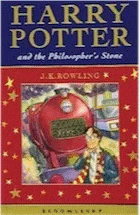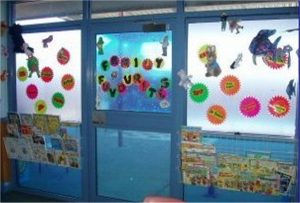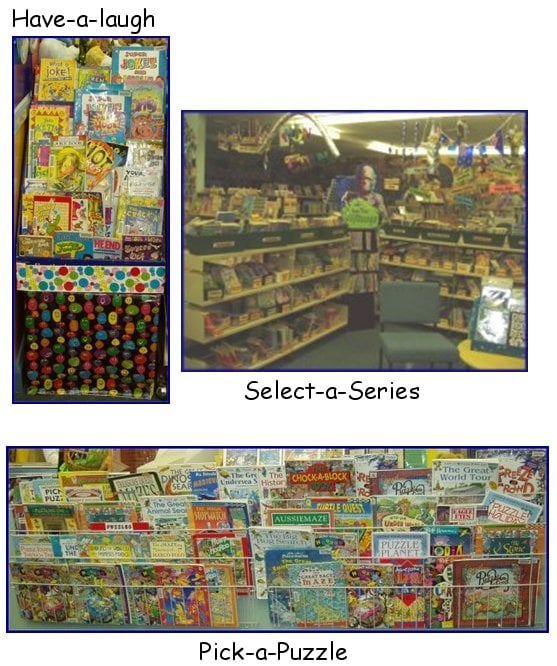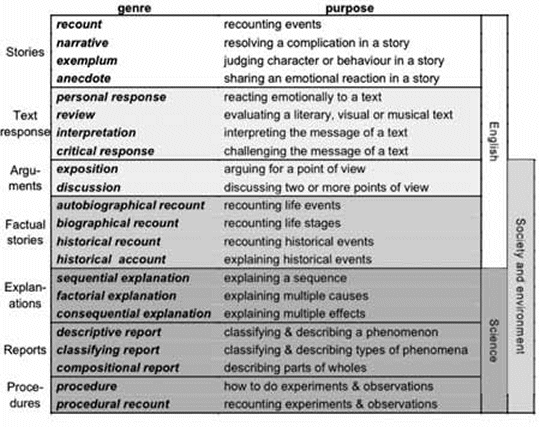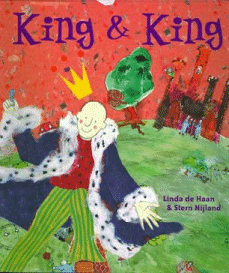
Ask any teacher librarian what their core business is and somewhere in a relatively short list will be a phrase relating to enabling and supporting students to be effective, efficient, independent readers. Whether that be preschool, primary, secondary or tertiary and referring to reading for pleasure or reading for research, the development of reading is at the heart of what we believe and at the heart of what is expected by our communities.
If there were a magic bullet to enable everyone to achieve the goal, then it would have been discovered by now and the continual arguments about phonics versus whole language would be silent; politicians would be basking in the glory of having a 100% literate community and publishers would be providing resources that meet the criteria. The teacher librarian’s role would be easy – just provide the resources to meet the students’ interests. Needs or abilities would not be a concern.
But the simple truth is that, like everything, there is no one way. We are individuals and the way our brains are wired and the way we learn to read are as individual as our DNA and our fingerprints. So why then, does learning to read and then developing and honing the skill have to be such a competition? While the “finishing line” is reasonably clear, why do we demand that all cross the line at the same time? Instead of paving the way for a smooth and safe journey, why do we pepper it with obstacles to climb over or manoeuvre around?

As the new school years looms in Australia and New Zealand – back-to-school advertising starts the day after Christmas – and mid-year assessments and reports are gearing up in northern hemisphere schools, there seems to be a rise in the need to be able to show that students have improved (or will improve) as the result of programs and practices and that the only way to demonstrate this is through quantitative data and comparison with other students.
Thus schools, teachers and ultimately TLs are looking for ways to measure this improvement whether it be through schemes that require students to have gained a certain number of points by responding to their reading; demonstrating that they have read a certain number of books or for a certain number of minutes; or moved through certain, arbitrary levels of achievement as though reading is a road with clearly defined bus stops on the way; or some other method that brings in an element of competition with other students. (And don’t be fooled – kindergarten kids know about good, better, best.)
The educational buzzword of the moment is “accountability” and my recent experience back in a primary school showed that teachers are spending more time teaching to a test so they can collect data than they do celebrating the joy of learning – the cry of “there’s no fun anymore” was common amongst experienced teachers like myself; less-experienced teachers were bemoaning that the job they did and they job they believed they should be doing were poles apart; and students were learning that school was all about jumping through hoops and being tested to prove you could jump as high as the next person. That it was all a huge competition that you had to win to succeed and if you didn’t you may as well tattoo ‘failure’ on your forehead.
Don’t get me wrong – I do believe that we need to monitor students’ progress but in a way that enables us to support their individual development by providing support or extension where it is appropriate. In regards to reading, back in the 70s when I began my initial teacher education in New Zealand, Dr Marie Clay was examining the reading behaviours of the very young and amongst a lot of other ground-breaking stuff, introduced the concept of running records which meant the teacher noted the child’s strategies as they read aloud and was able to make decisions about what support the child needed to become more independent. a running record enable the teacher to see what strategies the child had already internalised so these were not taught over and over unnecessarily, with the instructional focus falling on those strategies that needed refining. It was about improving teaching not measuring learning.
In her book, Reading in the Wild Donalyn Miller found that by Year 6 the majority of students viewed reading as a means to an academic end, not a source of pleasure in and of itself. Given that the five-year-old goes to school with the firm belief that they will be reading by the end of the first day what is it that we, as their educators do, that changes them in six or seven short years? What have we done to kill the joy of the printed word and the things it can teach us and the places it can take us?
So what role does the teacher librarian have in ensuring that that core business of assisting students to be independent readers, able to access, understand, interpret and manipulate text? Recent conversations on and in professional forums suggest that there are two camps when it comes to wearing the reader support hat,
The first camp comprises those who believe that their role is to be guided by teaching staff who see the library’s role as purely an adjunct to their teaching programs and support mandates that students should only borrow books that are at their reading level; that they should be able to read everything they borrow; that books must be of a certain type, format or length; that they should support a particular topic or focus within the classroom. They believe that students should choose from a pre-selected range, particularly restricting younger ones to picture books or those with plenty of photos, regardless of whether the child might share their choice with a parent or sibling and often agree to label or shelve the books, supposedly to make choice easier but in effect proclaiming the child’s ability or lack of it to peers. This is despite the mounting evidence that reading levels are inaccurate, vary according to the measure used for the exact piece of text, and the means for establishing a child’s reading level are also problematic.
Three Myths about Reading Levels ..and why you shouldn’t fall for them
Reading is an interactive process, so the difficulty or ease with which a particular reader can read a particular text depends in part on his or her prior knowledge related to the text and motivation for reading it.
In other words, a student’s reading choices are not independent, free, interest-driven and satisfying the need of the moment.
The second camp comprises those who believe in free voluntary choice so that students can be in control of their own reading journey and be empowered by and positive about having that control. They can shape their own reading journey; learn what they like and dislike; learn how to discard what doesn’t appeal for whatever reason; acknowledge that they will find some books easy and others more difficult (as happens in real life depending on our experience with the topic); explore a whole variety of worlds, characters, situations and opinions so their horizons are broadened in ways that only reading can do; challenge themselves to take new paths and detours; be challenged and perhaps changed by what they encounter and thus become better informed; become independent, critical, discriminating readers reflecting the real-world experience rather than some artificial domain. They can choose to extend themselves to read more challenging materials about unfamiliar topics or they can seek comfort in something that offers them support in a time of need. They can walk out with the thickest book in the library because that bolsters their self-esteem and image amongst their peers and regardless of whether it can or will be read, keeps a positive message about the joy and wonder of reading flowing.
Perhaps it is time to re-visit our core beliefs about what teaching and learning are and how those beliefs feed our programs and practices and how our programs and practices reflect those beliefs, while also examining our vision statement and what we believe a best-practice, top-shelf library looks like. As well as being the reader leader we must also be the reader support.
Are we in a school where there has very much a one-size-fits-all philosophy where students read class novels as a whole and move forward in a lock-step fashion?
Are we in a school where students are expected to read only within their “level” and where our collections are shelved according to those levels?
Are we in a school where reading is measured in the number of books read, minutes spent reading or points gained and rewards are offered on the basis of that?
Are we in a school where reading is seen as an academic competition where only the best will ever succeed because success is only measured by an academic score?
Are we in a school where the TL’s role is seen as the reading instructor rather than the reading facilitator, the “sage on the stage” instead of the “guide on the side”, to quote Jamie McKenzie.
If we are, what are we as TLs who supposedly have the big picture in the frame, doing to change the environment so that the running track becomes more level and every child has the chance to cross the finish line at their own pace?
Have we reflected on our professional beliefs and practices and articulated what we believe the school library’s role in supporting literacy to be?
Are we in a school that values individual difference and the importance of literacy?
Have we read Donalyn Miller’s books, or Readicide by Kelly Gallagher or the writing of Stephen Krashen so that our personal professional learning and understanding is up to date?
Are we aware of the research about the value of independent reading and the school’s role in this such as the Kids & Family Reading Report AND are we sharing this with our colleagues, executive and parents?
Are we encouraging students to set their own personal goals relating to reading so their journey becomes their own, one which they are in charge of and for which they can make their own decisions? Are we rewarding them in a way they feel is appropriate when they achieve their goal?
Are we supporting them through open-ended challenges such as Dr Booklove’s Reading Challenges, Joy Millam’s Challenge or that from Naomi Bates?
If students are required to respond formally to some of the titles they have read, are we offering a variety of ways that they can do this?
Do our circulation policies and practices support children’s choosing and choices as well as frequent, regular access to a wide range of resources?
Are we sensitive to and supportive of the needs of our clients, including those in different family structures, those for whom English is not their first language, those who are exploring their gender orientation, those who have learning difficulties generally and so on?
Are we sharing information about learning to read with the parent community as well as suggestions for the sorts of books they could investigate for their children?
If, through that reflection we find there is a mis-match between our personal beliefs and our professional environment then we need to ask ourselves hard questions about our choices of staying, challenging and changing or finding ourselves a position more in tune with those beliefs.
But in the meantime, with the current climate of testing and assessment and accountability and so on, which is only likely to increase sadly because of the associated high-stakes outcomes like funding, I don’t know how we can get the powers-that-be to rethink what they are doing and what they require of us, if we are required to do a formal assessment on what we cover in the library on the literature side of things, perhaps this may be a strategy that can be adopted and adapted as necessary.
I believe that if we are to encourage students to be lifelong readers, we have a responsibility to engage the kids in the love of story, the magic of words, the rhythms of the language and so on that we can and be as inventive as possible in our assessment tasks so they are hands-on, developmentally appropriate demonstrations of what students have learned. Not just endless worksheets and book reviews.
One way of managing the data collection is to identify the outcomes you need to address and choose a range of stories that will enable you to do this. Share these stories over a number of sessions but instead of trying to assess every student on every story, just target a few for each session.
Have in mind those students and monitor their participation in the discussions and if they are not participating (perhaps they are swamped by those more vocal) then ask them a question directly that will help you mentally assess their capability. If possible, make notes about the target students at the end of the session so you don’t forget what you learned.
If you have a collection of stories then you can introduce the concepts you are focusing on cumulatively with each one by saying something like, “Remember when we read… we thought about how being in a thunderstorm made us feel. Well, our story today is set in the dead of night so I want you to think about how that might make you feel. And how it might change the way the characters in the story think and feel and act.” If you start your assessments with the kids you know will pick the concepts up quickly, this cumulative, spiral reinforcement will give those not-so-confident students time to build up their own mindset so when they become your target group for the session they have been set for success. And in the meantime you’ve helped them all engage more with the story, increased their understanding of the sorts of techniques authors and illustrators use and kept them engage with story and reading as a whole.
Use your curriculum and talk with the teachers to identify those things that you will focus on during your time with the students so they are then free to focus on other elements. This not only creates a partnership between you but explicitly demonstrates how you can assist them in lessening their workload. It is unlikely that the PTB will pull back from what the curriculum currently demands – it’s as though those who write the curricula are in competition with each other to see who can get their students doing things faster, regardless of any developmental considerations or long-term interest in keeping them reading – because that will be seen as dumbing down the curriculum and they won’t wear that.
There are so many ways we as teacher librarians can support our students’ reading so that it becomes a choice rather than a competition and we need to be their loudest voice so that each of them has the right to be a winner in whatever way that looks for them.

